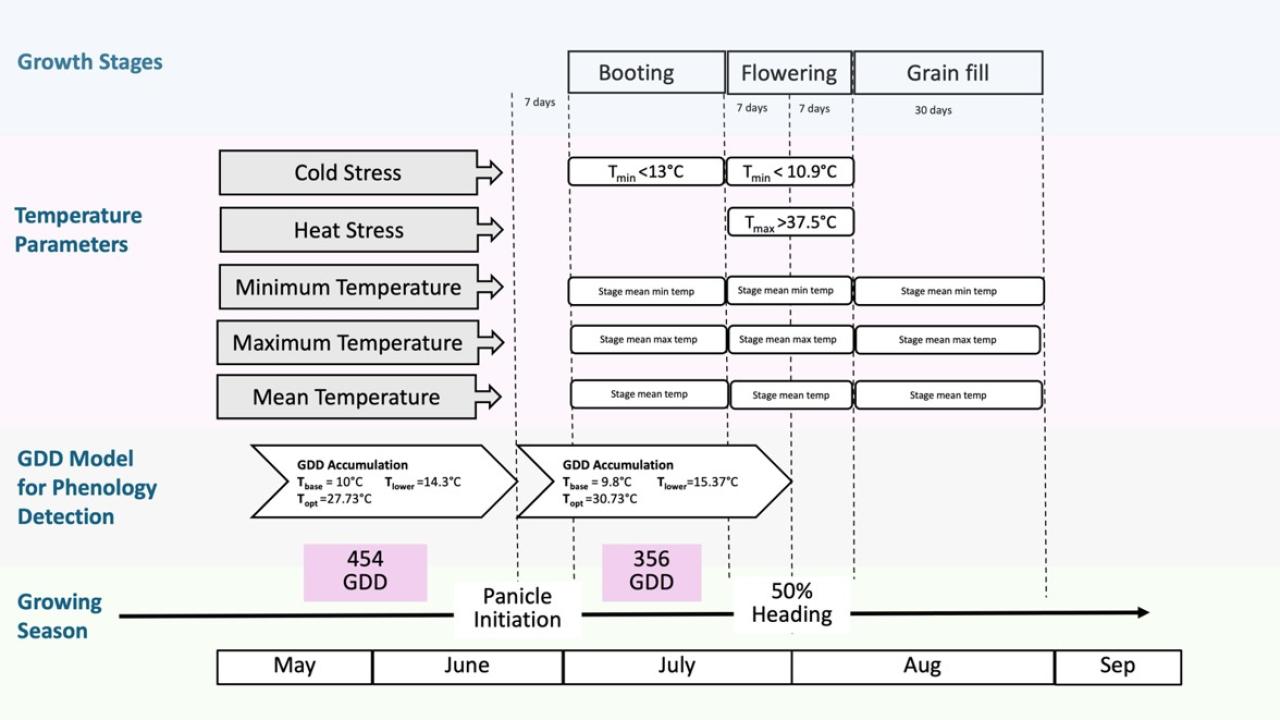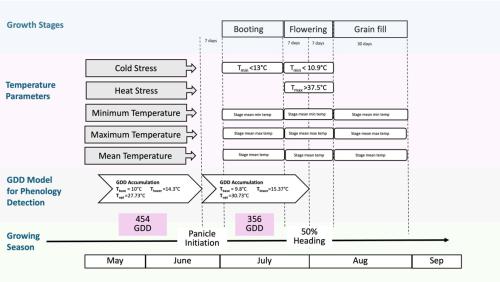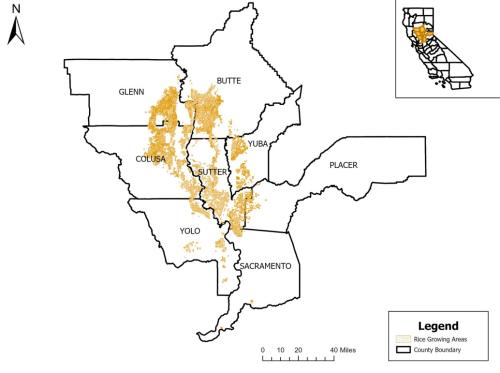
Rice yield impacts and adaptation strategies due to temperature stress in the Sacramento Valley of California
California’s Sacramento Valley, known for its hot, dry summers and abundant sunshine, produces the second-highest rice yields in the world after Australia. However, rising temperatures and more frequent extreme events such as droughts, heat waves, and cold events are expected to challenge this productivity.
Earlier research suggested seasonal mean temperatures as the main driving factor for yield losses. But more recent studies emphasize that temperatures during critical growth stages, such as booting and flowering have a much stronger effect. In California, for instance, yield losses due to temperature stress during these stages were found to be up to five times higher than losses associated with seasonal warming. While field experiments have provided valuable insights at the plot level, how these relationships play out across entire farming systems with diverse climates and management practices are still unknown. My research addresses this gap by scaling these relationships to the county level and examining their future implications under different climate scenarios.
My research objectives are
1. Quantify how the temperature parameters unique to different rice growing stages explain yield variability in California’s Sacramento Valley using historical climate and yield data
2. Project how these stress parameters change under future climate scenarios to assess long-term risks to rice production
Over the past academic year, I compiled and processed 45 years of county-level rice yield and temperature data from USDA NASS and gridMET. Using the Growing Degree Day (GDD) model, I identified key growth stages and computed temperature variables specific to each stage. This summer, I focused on building statistical models to link these variables with yield variability. Among the models tested, the Lasso regression performed best, aligning closely with previous California-based studies.
Interestingly, long-term trends show that cold stress during booting and flowering has decreased, while heat stress during flowering remains frequent which is consistent with California’s warming climate. Next, I will project how these temperature stress indicators may evolve under high- and low-emission scenarios, and what these shifts could mean for rice production in the coming decades. Understanding these temperature yield dynamics can help inform adaptation strategies to sustain rice farming and the communities it supports in a changing climate.
Last but not the least, I am grateful towards my supervisor Dr. Steven Ostoja and our team at USDA California Climate Hub: Ning Zhang, Mingyue Xie and Xiaoyu Liang for their invaluable guidance and support in this research.
For more information, contact Dipti Baral.
Figure 1: Research Methodology

Figure 2: Study Area: Rice Growing Counties in the Sacramento Valley of California
